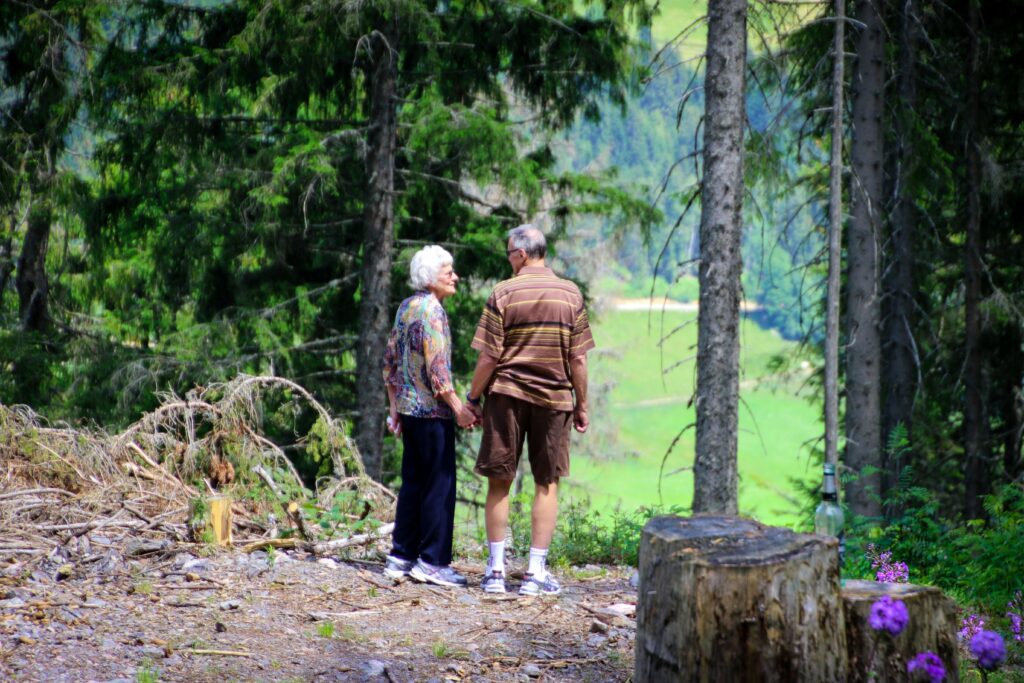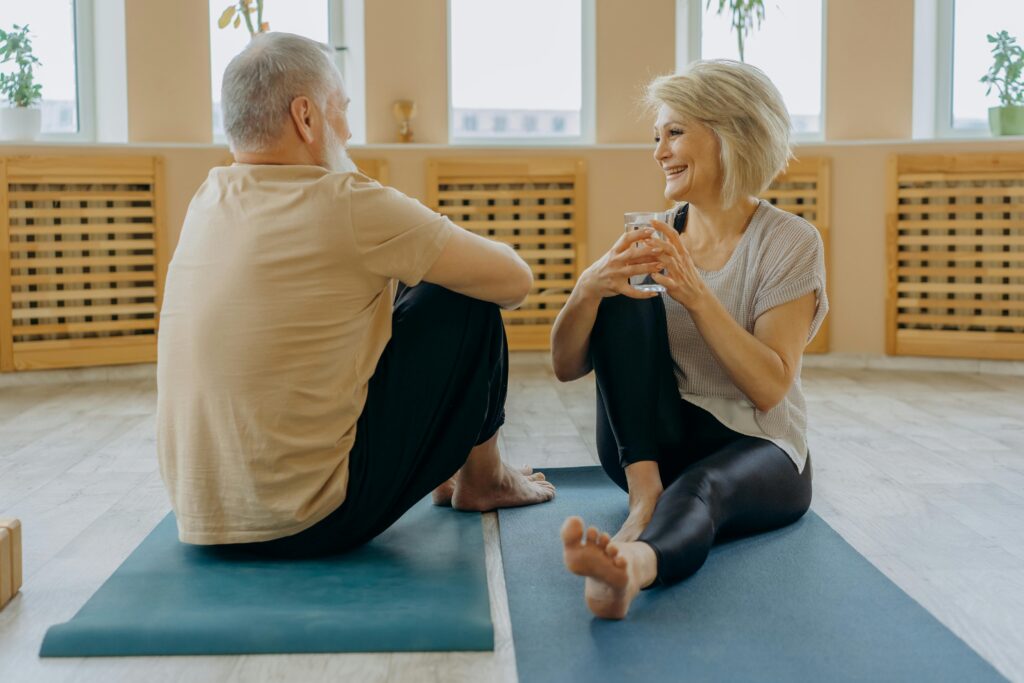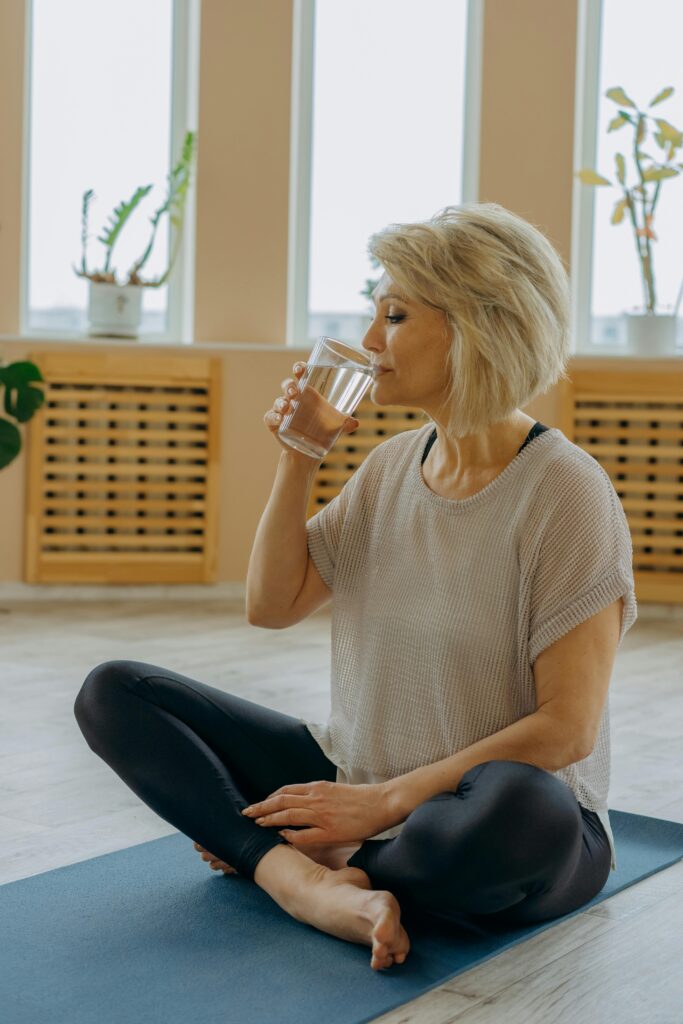
Being active and eating well is proven to help look after your wellbeing in later life and there is no excuse when moving to a retirement village!
The mission of Wellbeing by Rangeford Villages is to empower owners to nurture their lifestyle choices and to help them thrive by providing an integrated approach to wellbeing throughout the village and beyond.
Physical activity doesn’t have to mean going to the gym if that isn’t your cup of tea. Pilates, gardening, dog walking, dancing or being part of the local walking group are all really good ways to get some exercise and keep moving.
Looking after our body and mind is essential to living a healthy and happy retirement.
Regular physical activity and exercise has many benefits including:
- Promoting good sleep patterns
- Providing meaningful activity
- Boosting self-esteem, confidence, and self-worth
- A chance to meet new people and enhance your social life
As a new retirement village resident, you will be invited to attend a ‘Wellbeing Orientation’ in the first 3-4 weeks of moving in and this will help ensure that your living experience meets your desires, needs and expectations and that you get the most out of village life.
It will be different for everyone and could include creating an exercise programme, connecting with village or outside groups, running a club or society or taking up a new hobby or interest.
An array of classes conducted by friendly, qualified instructors include Tai Chi, Pilates, Yoga and even aerobics and Zumba. Our trained professionals are fully equipped with the latest age-appropriate equipment and a member of the fitness team will be able to help guide with workouts.
Green spaces are the life force of any retirement community, and our beautifully landscaped gardens are set amongst mature trees. You can spend time enjoying the beauty and wildlife through walks in our grounds and venture further afield on walks in the local area.
At the heart of our luxury retirement villages, you will find ‘The Pavilion’ which acts as the main social hub and is the setting for most of the communal facilities. Here you will find a heated indoor swimming pool, complete with sauna, steam room and other spa facilities to help you stay healthy and relax. *
One resident from Wadswick Green said “We have more time to do the things we enjoy. We were active prior to the move, so it’s great that we can maintain that. The facilities are great and sometimes it feels like we have the pool to ourselves. It really encourages you to keep fit – in fact, I wonder if we’re more active now!”
Here at Rangeford Villages, you can be as involved as you want – Your Life, Your Way.
*Spa facilities not available at Mickle Hill North Yorkshire.
Deeper dive: Fitness in Retirement
As we age, it’s essential to prioritize our physical and mental wellbeing to maintain a healthy and active lifestyle. Regular physical activity, a balanced diet, and social connections are crucial for overall health and wellbeing in later life.
Engaging in physical activity not only helps keep our bodies strong but also boosts our mental wellbeing, making us feel more energetic and positive. A balanced diet ensures we get the necessary nutrients to support our physical health, while staying socially connected enriches our lives and keeps us mentally sharp.
Benefits of Staying Physically Active
Staying physically active is essential for maintaining physical health and wellbeing in older adults. Regular physical activity can help reduce the risk of chronic diseases, such as heart disease, and improve mental wellbeing.
Exercise classes, such as Zumba and yoga, can be beneficial for both physical and mental health, providing a fun and engaging way to stay fit. Even moderate-intensity activity, such as brisk walking, can have significant health benefits, including improved cardiovascular health and increased energy levels.
In fact, the NHS recommends at least 150 minutes of moderate-intensity activity per week for older adults to maintain optimal health. By staying physically active, you can enjoy a higher quality of life and greater independence in your later years.
Types of Exercise Suitable for Older Adults

There are various types of exercise suitable for older adults, each offering unique benefits:
- Brisk walking: A great way to get some fresh air and improve cardiovascular health. Walking is easy to incorporate into your daily routine and can be done almost anywhere.
- Swimming: A low-impact exercise that’s easy on the joints, making it ideal for those with arthritis or other joint issues. Swimming also provides a full-body workout.
- Cycling: A fun way to explore local parks and trails while improving cardiovascular health and muscle strength. Cycling can be done on a stationary bike or outdoors.
- Yoga: A low-impact exercise that can improve flexibility, balance, and strength. Yoga also promotes relaxation and mental clarity.
- Tai chi: A slow and gentle exercise that can improve balance and reduce the risk of falls. Tai chi is particularly beneficial for enhancing coordination and mental focus.
It’s essential to consult with trained professionals before starting any new exercise program, especially if you have any underlying health conditions. They can help tailor an exercise plan that suits your individual needs and abilities.
Creating a Fitness Routine
Creating a fitness routine can be challenging in older age, but it’s essential for maintaining physical health and wellbeing. Here are some tips to get you started:
- Start slowly: Begin with short, manageable sessions and gradually increase the duration and intensity as your fitness improves. This approach helps prevent injury and builds confidence.
- Find an exercise buddy: Exercising with a friend or family member can be a great motivator. It makes the activity more enjoyable and provides accountability.
- Schedule it in: Treat exercise as a non-negotiable part of your daily routine. Set aside specific times for physical activity to ensure it becomes a regular habit.
- Mix it up: Vary your exercise routine to avoid boredom and prevent plateaus. Incorporate different types of activities to keep things interesting and work different muscle groups.
- Listen to your body: Rest and recovery are just as important as exercise. Pay attention to how your body feels and take breaks when needed to avoid overexertion.
By following these tips, you can create a sustainable fitness routine that supports your physical health and keeps you motivated.
Nutrition and Hydration for Fitness

A balanced diet and adequate hydration are essential for maintaining physical health and wellbeing.
Here are some tips to keep in mind:
- Eat a balanced diet: Focus on whole foods, such as fruits, vegetables, whole grains, and lean proteins. These foods provide the necessary nutrients to support your physical activity and overall health.
- Stay hydrated: Aim to drink at least eight glasses of water per day. Proper hydration is crucial for energy levels, digestion, and overall bodily functions.
- Avoid processed foods: Processed foods can be high in added sugars, salt, and unhealthy fats, which can negatively impact your health. Opt for fresh, natural foods whenever possible.
- Limit caffeine and alcohol: Both can have negative effects on sleep quality and overall health. Moderation is key to maintaining a healthy balance.
- Prioritize sleep: Aim for 7-9 hours of sleep per night to help your body recover from exercise and maintain optimal health. Good sleep quality is essential for physical and mental wellbeing.
By incorporating these tips into your daily routine, you can maintain a healthy and active lifestyle in later life. Remember to always consult with trained professionals before starting any new exercise program and prioritize your physical and mental wellbeing.


